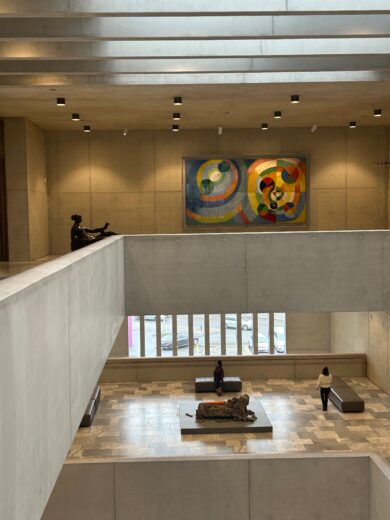Although some art world insiders consider Basel to be the cultural capital of Switzerland, because of Art Basel’s importance on the contemporary art world social calendar, Zurich is also an important cultural centre.
You can see many of the world’s most celebrated artists, from Henri Matisse to Vincent van Gogh, at Kunsthaus Zurich. It is home to one of Switzerland’s most important art collections, with around 4,000 paintings and sculptures as well as 95,000 prints and drawings from the 13th century to the present day.
There are also many world-class auction houses and commercial galleries in Zurich. Culturalee visited Zurich and selected 6 exhibitions to see in Spring 2024.
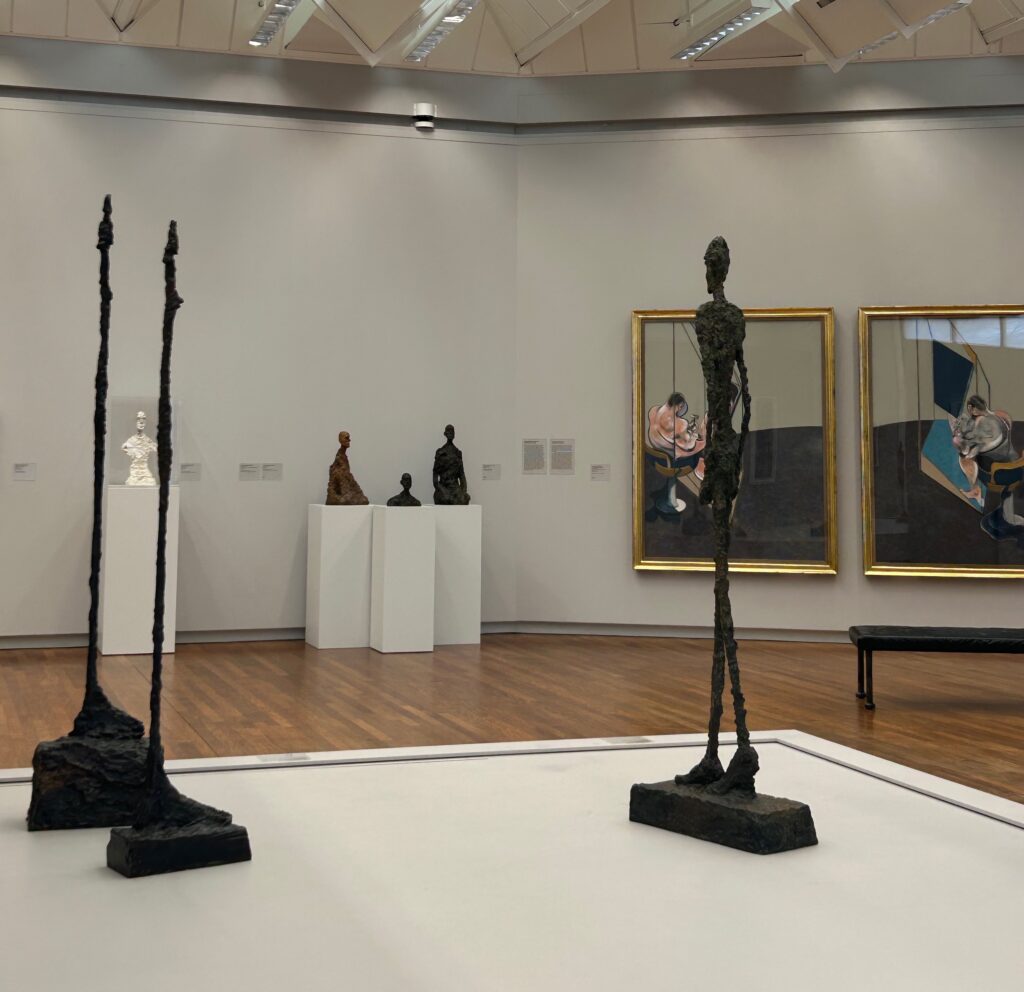
Kunsthaus Zurich
Switzerland’s largest art museum, the Kunsthaus Zurich brings together more than 800 years of art history, with a vast collection ranging from the Middle Ages to the present day. At the entrance of the Kunsthaus is a cast of Auguste Rodin’s 19th Century masterpiece ‘La Porte de l’Enfer’ (Gates of Hell), which sets a precedent for the quality of the art inside the building.
This really is an art lover’s paradise, with an incredible collection spread over two buildings and featuring paintings, sculptures, installations, works on paper, photographs, videos and digital works representing eight centuries of art.
The Kunsthaus is home to the most important museum collection of works by Swiss sculptor Alberto Giacometti. The Giacommetti collection is breathtaking, and in one gallery is juxtaposed with a stunning Francis Bacon triptych and a contemporary sculpture by Rebecca Warren.
Kunsthaus also boasts the biggest assembly of paintings by Edvard Munch outside Norway, along with outstanding works of Impressionism and Classical Modernism – from Claude Monet, Vincent van Gogh, Pablo Picasso and Pierre Bonnard to Oskar Kokoschka and Marc Chagall. A highlight is a room featuring three vast Waterlilies canvases by Monet, which were gifted to the museum by Emil Buhrle.
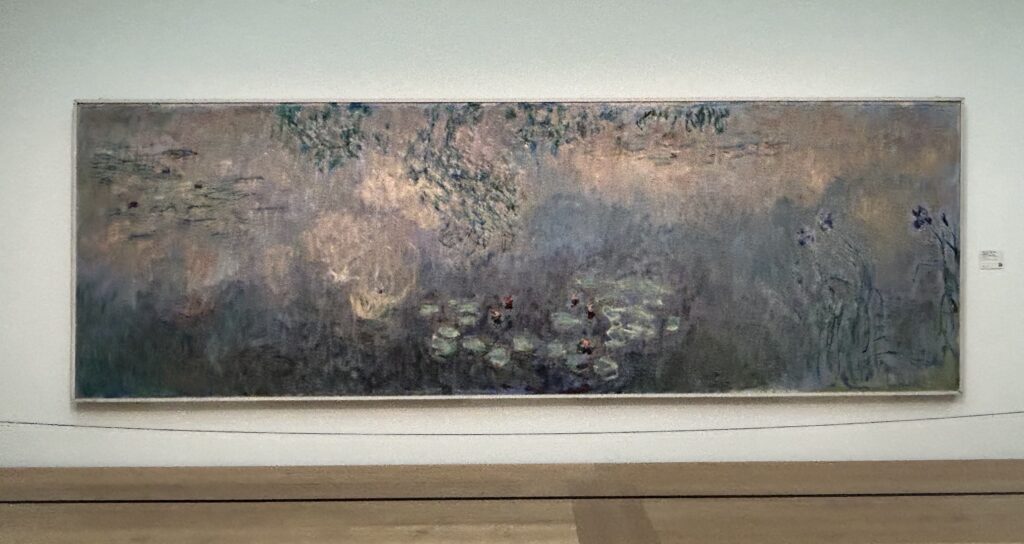
Further highlights include the Pop Art of Andy Warhol and Roy Lichtenstein as well as works by artists such as Cy Twombly, Joseph Beuys and Georg Baselitz. Video installations and photographs by Fischli/Weiss and Pipilotti Rist extend the museum’s reach into the 21st century.
For lovers of Dutch still life, there is The Knecht Collection, a room filled with 40 exquisite 17th century Dutch paintings.
The Kunsthaus also holds the world’s largest collection of objects from the Dada movement, which was founded in Zurich in 1916: exhibitions that change every three months celebrate the work of Dada artists including Hans Arp, Hannah Höch, Sophie Taeuber-Arp, Man Ray and Tristan Tzara. Meanwhile, series such as ‘ReCollect!’ offer contemporary artists an opportunity to engage with the collection.
The Zürcher Kunstgesellschaft’s first museum building was constructed on Heimplatz in 1910. From the outset, it was designed not just as a museum or art gallery but as a combination of the two, with temporary exhibitions and its own collection. Since the museum extension designed by David Chipperfield opened in 2021, the Kunsthaus has had more space for contemporary art, and now exhibits major private loans featuring groups of Fauvist and Expressionist works in the Gabriele and Werner Merzbacher Collection, Impressionism in the Emil Buhrle Colelction, and American Abstraction in the Hubert Looser Collection.
The extended Kunsthaus is a gateway to the world of art, in all its rich and varied forms. It reflects and shapes contemporary trends and builds on the existing strengths of its collection.
Uwe Wittwer @ Galerie Peter Kilchmann
Galerie Peter Kilchmann presents ‘The Blind Singer Leads the Way’, a solo exhibition of paintings by Swiss artist Uwe Wittwer.
The artist’s body of works contain an interweaving of historical and fictional motifs and form a network of cultural references. Wittwer’s inspiration for the latest conceptual paintings and watercolours comes from his in-depth research in historical photo archives.
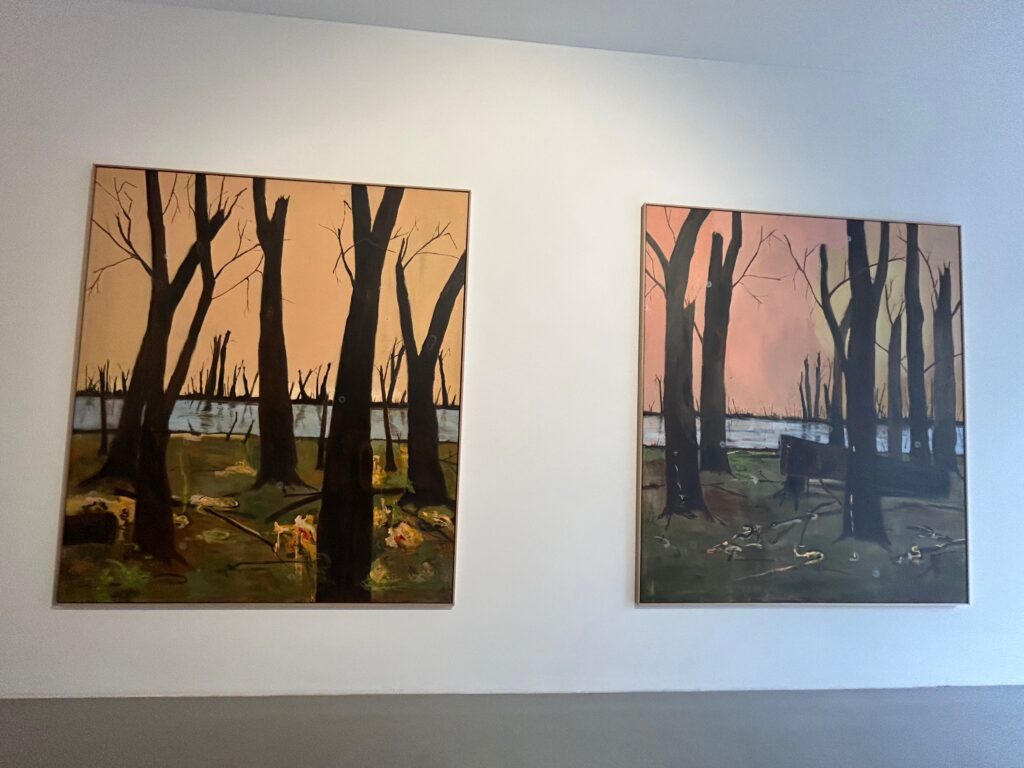
For this exhibition, he began by researching the Basel Mission Archives and the archives of the Pitt Rivers Foundation in Oxford. The artist was fascinated by the correlation between trade, religion and colonial conquest. In addition to the archetypal motifs, the photographic subjects he discovered offered fascinating symbolic ambivalences, which he reconceptualized and interpreted in the exhibition.
Three large paintings on the ground floor of the gallery set the basis for the formal and conceptual content. The river landscape that the artist stages in the three works appears to have been affected by natural or man-made events. Barren, presumably devastated forest landscapes have always been part of the artist’s repertoire. In the foreground of the compositions are painterly elements, high-contrast brushstrokes that exist in the mannerism of wild painting as a statement about the painterly act itself in the work. Wittwer placed painted foxing spots across the composition of the canvas. These brush-applied circles shape a moment of further abstraction and create an additional layer to the paintings. They form points of contrast that manifest the relationship between reproduction and reality, source material, and pictorial implementation.
On the upper floor of the gallery, eighteen new small-format oil paintings on canvas, mostly portraits, comprise the central part of the exhibition. In front of the window in the central room is the glass painting The Blind Singer, the title work of the exhibition. The painting was created by Wittwer in the Mayer’sche Hofkunstanstalt für Glasmalerei und Mosaik in Munich using traditional techniques and careful manual work. The transparent brown-blue work underlines the poetic content of Wittwer’s oeuvre.
Completing the exhibition is a mural In the basement of the gallery that runs through the entire room. With various elongated lines in red color, he replicates the courses of the various rivers that the colonial traders and missionaries navigated at the time of their expansion.
Uwe Wittwer ‘The Blind Singer Leads the Way’ is at Peter Kilchmann until 29th March, 2024.
https://www.peterkilchmann.com
Jean-Frédéric Schnyder @ Galerie Eva Presenhuber
Galerie Eva Presenhuber presents ŒL AUF LEINWAND, its ninth solo exhibition with Swiss artist Jean-Frédéric Schnyder.
The 67 paintings on display and the 162-part series Billige Bilder (“Cheap Pictures”) provide an overview of Schnyder’s extensive painterly oeuvre from 1982 to the present day and reveal his most important traits, namely seriality, the tension between similarity and dissimilarity, as well as a great interest in the everyday ordinary. They are permeated by recognizable motifs and concepts, such as landscapes, letter paintings and still lifes. In the juxtaposition of paintings such as 3 Blumen, which shows three flowers in a coarse, pixel-like colour grid, and work groups, such as Abend am Zugersee, the question of a body of work arises. The answer lies in Schnyder’s absolute and consistent interest in the subject and in painting itself.
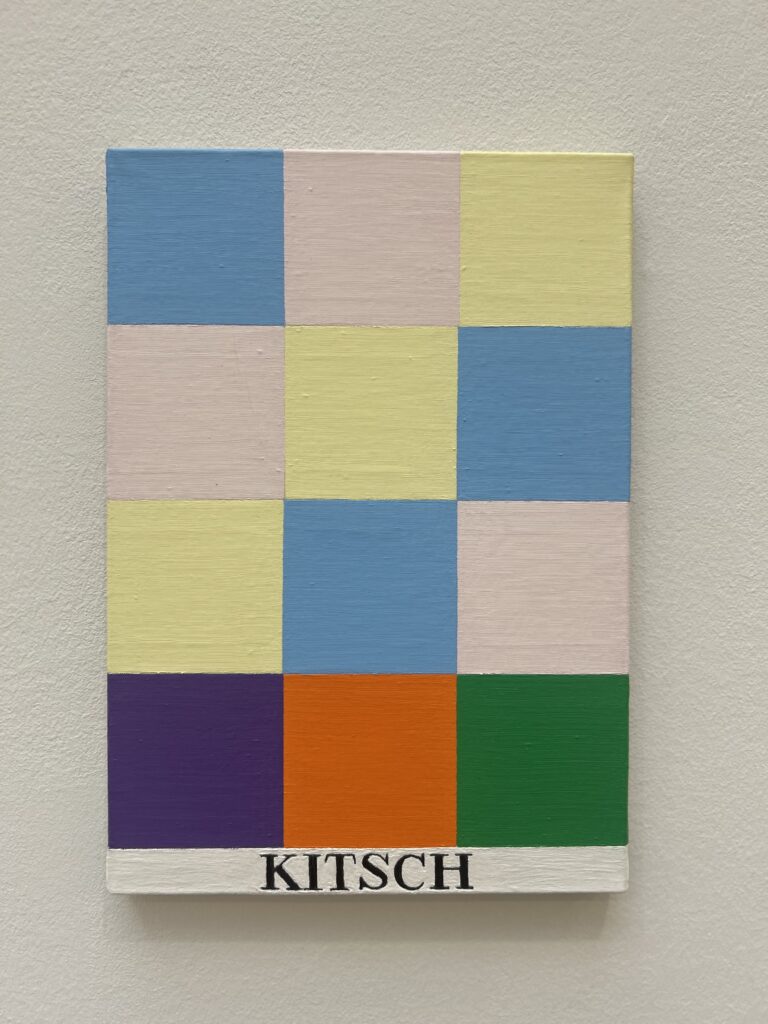
Jean-Frédéric Schnyder ŒL AUF LEINWAND is at Galerie Eva Presenhuber until 23rd March, 2024.
https://www.presenhuber.com/exhibitions
threads @ Mai 36 Galerie
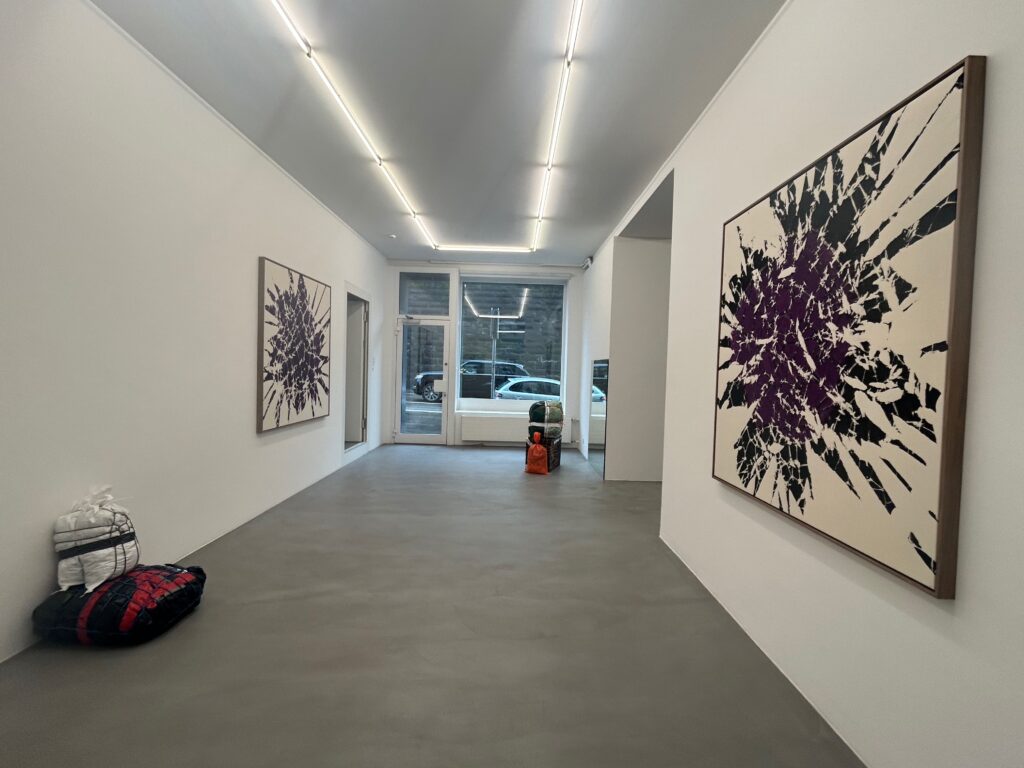
Group exhibition ‘threads’ at Mai 36 Galerie brings together works by Maia Ruth Lee, Sara Sadik, Jack Warne, and Leon Xu, four artists from disparate backgrounds, cultural points of reference, and processed mediums, spanning physical and digital painting, video, and augmented reality. The exhibition explores the intricate tapestry of meaning woven into the word “threads” – with the dual nature of its pronunciation, echoing both connection and disquiet, an interplay between the “threads” of family, culture, and past, and the potential “threat” to their preservation posed by exported technologies, global brands and mass media. Together they reflect on navigating the double helix of connection and disruption in a post-migrant, culturally fluid, digital society.
‘threads’ conjures images of connection, weaving together the fabric of our lives with the ties that bind us to our roots. It speaks to the familial threads that link generations, the cultural threads that enrich our identities.
Trends, tastes, and pop cultures are increasingly becoming global phenomenas, accelerated by social media algorithms (e.g. Meta’s newest social platform also called “threads”) and monopolistic platforms like Spotify or Amazon, arguably leading to more global cultural uniformity, potentially losing important local nuances along the way. At the same time, the search for the individual identity within the mass and the urge to showcase personality is rising. The exhibition explores ways of cultural transition, preservation of memories, and global interconnectedness while building upon and expanding the meaning of individuality and home.
‘Threads’ is at Mai 36 Galerie until 9th March, 2024.
Christian Herdeg @ Galerie lange + pult
Christian Herdeg: New Works is the third solo exhibition of the contemporary light artist at galerie lange + pult.
Herdeg is a pioneer in contemporary light art. His fascination with the optical and physical properties of light began over five decades ago. His exploration of the states of light in relation to various materials and surfaces is reflected in his works. The 1970s were marked by Herdeg’s experiments with neon light. In recent decades, there has been a development towards wall-spanning installations made of plexiglass and argon tubes, as seen in “Black Light Organism”, as well as monumental sculptures in public spaces. Geometric shapes such as circles, squares, and lines have become Herdeg’s characteristic expression.
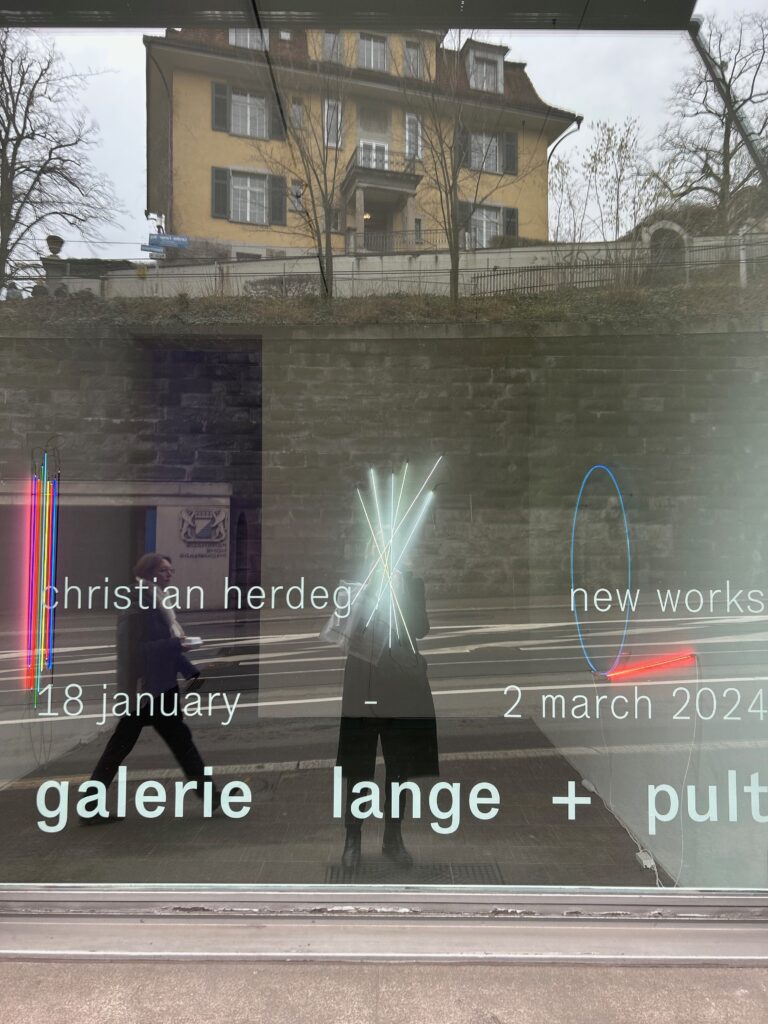
His style manifests itself in a geometric language. In both “Pink Axis II” and “Black Horizon”, Herdeg combines argon black light tubes with fluorescent color surfaces in an impactful way. Minimalism and the effect of a single light source create a seemingly infinite, virtual dimension.
Christian Herdeg: New Works is at Galerie lange + pult until 9th March, 2024.
Hu Qingyan @ Galerie Urs Meile
Hu Qingyan ‘Keep Silent’ is the first solo exhibition of Chinese artist Hu Qingyan (b. 1982, Shandong Province) at Galerie Urs Meile. Hu Qingyan has chosen marble, perceived commonly as cold, neutral and solemn, as the sole material for all of the artworks on display. Beyond their discussion of questions internal to sculpture, these creations lead us into multidimensional explorations of society, philosophy, and politics through which to ponder the complex substantive relationships between art, reality, and life.
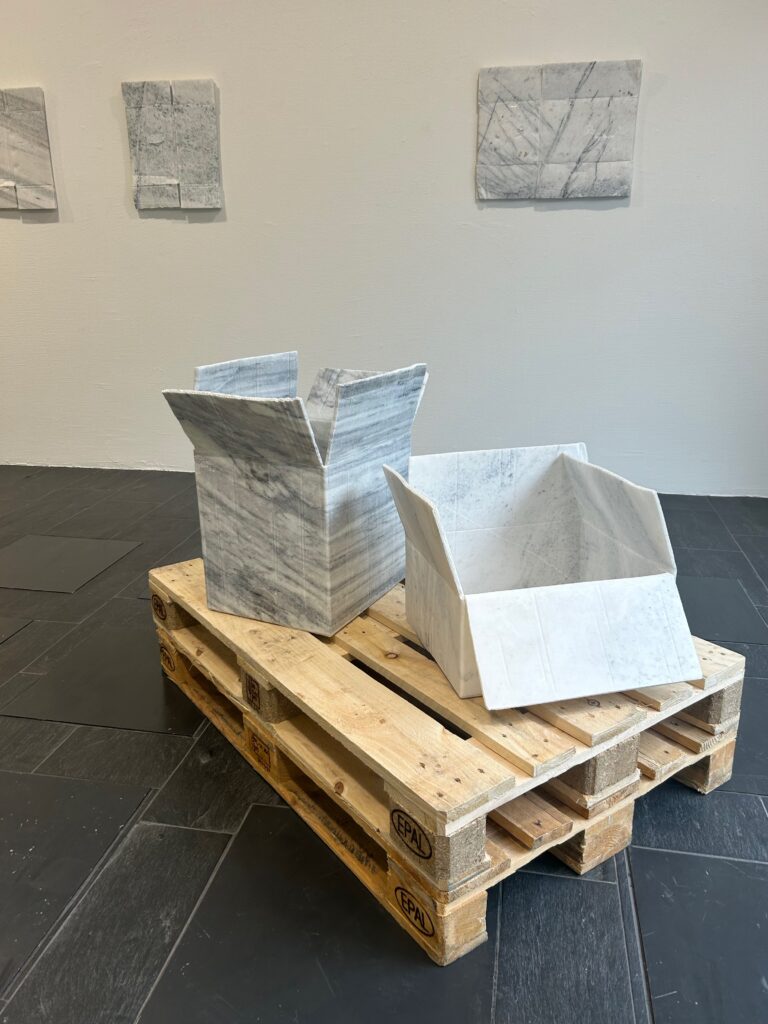
Cardboard boxes carved from marble are laid on pallets, or tossed directly on the floor, creating an unsettling memorial of empty and superfluous consumerism. The work series The World of Silence imbues the neutral, cold material with tender, individual human sentiment, while condensing and transforming the artist’s perceptions of the surrounding reality and society. During the pandemic, people’s lives were once extremely dependent on couriers owe to China’s zeroing policy. Life supplies were accomplished through deliveries that were uniformly managed by the community. The cardboard boxes used to deliver the necessities became a symbol that suggest the state of people’s lives in extreme situations and were loaded with individual sentiments.
Hu Qingyan ‘Keep Silent’ is at Galerie Urs Meile until 29th March, 2024.

